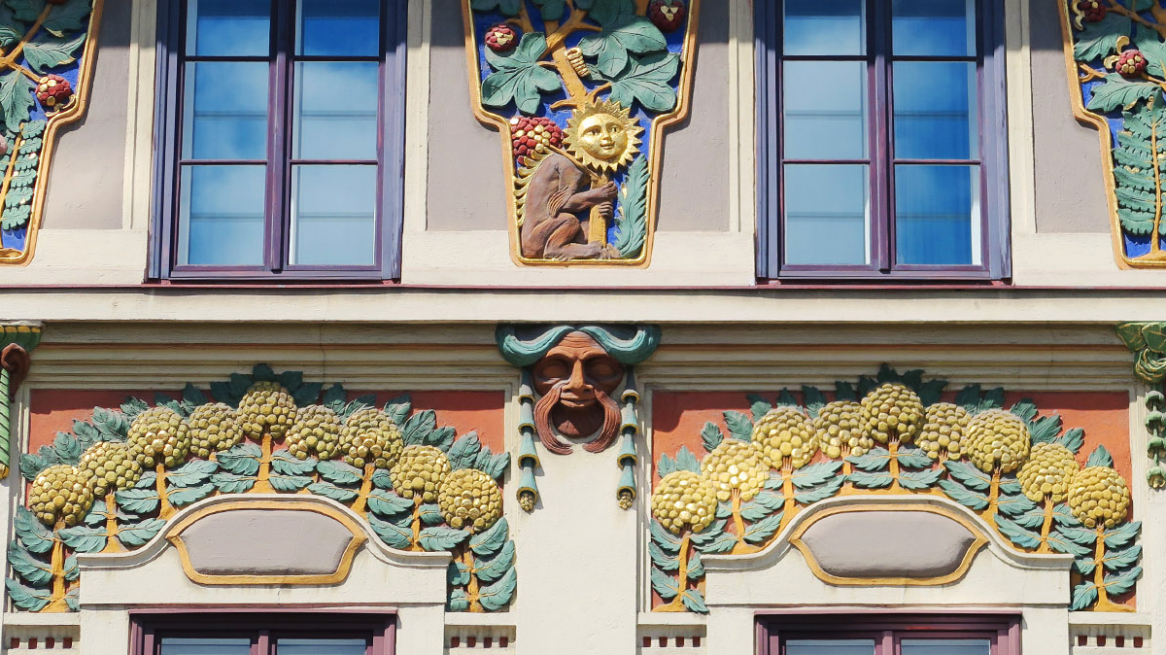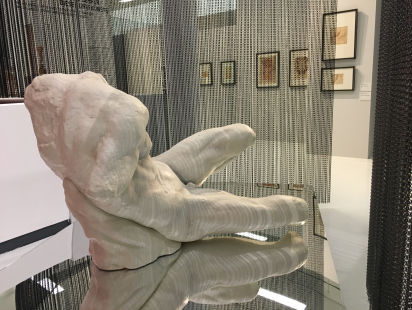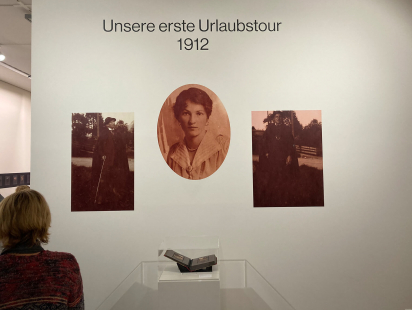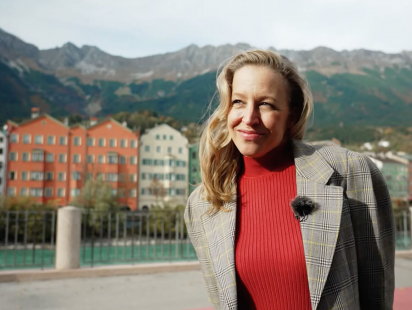This is the second part of the walk through west Wilten, the southern district of the inner city of Innsbruck. The first part of the walk can be found here.
We now take the road Innrain towards the north-east. On our left is the Innrain campus of the University of Innsbruck. (The campus sits partly outside Wilten.) On our right, we will pass by this “Villa Retter”.
Former Montessori Kindergarten: Villa Retter
This rural-style cottage was completed in 1927 and was designed by Architect Josef J. Retter — we have already visited his other buildings in the first part of the walk. This was the residence of his eldest daughter Maria, a Montessori educationist, and she founded a kindergarten here in 1932. The school reopened after WWII and ran till 1964.
Across the road, the Innrain campus opened in 1924 and it is the main campus of the “Uni”. Let’s have a look at the controversial WWI memorial in front of the Neo-Baroque headquarter.
The University of Innsbruck: The WWI Memorial
In 2019, the Uni celebrated its 350th anniversary. According to the official website: “On the occasion of its 350th anniversary the University of Innsbruck is addressing its varied and multifaceted past. Particularly, an honest confrontation with the events of the Nazi period and its aftereffects has long been avoided.”
The renovation of this WWI memorial, carried out by artist FLATZ, was part of the anniversary programme.
In the left photo below is the original memorial. It was erected in 1926 to commemorate the University’s students and staff lost in the WWI (and later in the WWII). It reads (in German) Honor, Freedom and Fatherland respectively on each side of the triangular plinth. The memorial was masculine, rigid and heavy and it advocated nationalism. Furthermore, its designer, architect Lois Welzenbacher, eventually joined the Reich Chamber of Fine Arts (an official Nazi institution) in 1933.
Over the decades, the memorial invited numerous debates and vandalism. Grassroots vandalism eventually became one of the languages used by artist FLATZ to counterbalance the authoritative memorial. He added “which“(in spray-paint font) on top of each existing word and laid a giant white rose at the foot of the eagle.
“Reagent”
A bit further north, there is yet another artwork made by an architect – architect Stefan Hitthaler. The 9-meter-tall “Reagent” was installed in 2015 and is about constant creation and the interaction between human and science.
Please cross the road at the traffic light here and enter the hospital area through the small lane (straight ahead).
The Tirol Kliniken Hospitals
The complex is a combination of state hospitals and the clinics of the Medical University of Innsbruck. (It also sits partly outside Wilten.) Here the streets Anichstraße and Maximilianstraße both bend in an unusual way but the map at the end of this article might help with your navigation.
Art in healthcare settings is an important field of public art because clearly our well-being can benefit from it. In the Tirol Kliniken quarter, the artworks tend to be realistic and human-themed. The three sculptures below are on the street where the SPAR supermarket is. (This SPAR opens on Sundays.) The two on the left were made by Walter Nagl in the 1980s.
Then there is a little challenge for you: find this statue, the key to our next stop! He stands in the north of the security gate and a bakery/cafe (where Schöpfstraße meets Fritz-Pregl-Straße). Please walk down the ramp and through the parking lot. The Anatomical Museum will appear on your right.
The Anatomical Museum
The Anatomical Museum belongs to the Medical University of Innsbruck and is inside the Institute of Clinical and Functional Anatomy. Originally completed in 1889, this Neo-Renaissance building had to be restored after WWII. During the Nazi times the institute received bodies from executions (as did the institutes in Vienna and Graz) but these documented remains are no longer in use or on display. Nevertheless, my only trip to this museum was an intense experience, partly because the specimens were densely arranged.
The museum is only open on Thursdays from 15.30 to 18.00 (or by appointment).
The walk then continues onto Müllerstraße, a peaceful stretch of road. The old school on the left dates back to 1911 and the entire row of houses on the right were built in 1878.
I Am Your Father
In the next block, Darth Vader awaits at Müllerstraße 28. I know nothing about this relief except that the Force is strong with this one.
The Tiroler Glasmalerei und Mosaik Anstalt, Müllerstraße 10 & Glasmalereistraße 3, 5
Further down Müllerstraße, there is a stained glass and mosaic production complex. The artisan workshop was founded in 1861 and the company still creates and restores stained glass windows. Its works can be found in over 4,000 churches and cathedrals worldwide!
The stained glass factory in Müllerstraße (built in 1870) was merged with the mosaic workshop in Glasmalereistraße in 1899. Partly reconstructed after WWII, the complex now consists of residential, industrial and office buildings, in addition to a restaurant.
“Kaiser Maximilian Hommage”, Maximilianstraße 9
In the north of the adjacent parking lot, there is a large mural made by local artist HNRX on the building of the publisher Tyrolia.
The Year 2019 marked the 500th anniversary of the death of Emperor Maximilian I and there were many programmes commemorating him, including this 20-meter-tall mural. In the mural, HNRX visualized the Emperor’s life and tales with various symbols (hint: the Golden Roof).
Winklerhaus, Maximilianstraße 1 & Leopoldstraße 2
It is probably the most well-known Art Nouveau building in Innsbruck. The business and residential building wrapping around the corner of Leopoldstraße and Maximilianstraße is actually a combination of two houses. The one in Leopoldstraße, build in 1873, was given a facelift when the other one was being built in 1902-03 and its humble facade became richly ornamental Art Nouveau.
The Final Stop: Former Boundary Slate
North-west to the Triumphpforte, at the corner of Gasthaus Goldene Krone, there is a 1745 slate marking the boundary between Wilten and Innsbruck. The upper coat of arms, however, does not represent the district Wilten but the Stift Wilten (monastery church), the origin of Wilten. The coat of arms includes the symbol of the legendary Giant Haymon. Was he real though? That is is another story…
* I dedicate this walk to the PoGo community in Innsbruck. LG Wunschbild
* References: Tiroler Kulturgüter-Datenbank and “Architekturführer Innsbruck / Architectural guide Innsbruck” by Christoph Hölz, Klaus Tragbar and Veronika Weiss (ISBN 978-3709972045)
The purple markers in the map below are the sites shown in the article and the yellow ones are additional points of interest.
Rate this article
Show me the location on the map
Ichia Wu is a Taiwanese artist with broad experience in the tourism sector. Since relocating to Innsbruck, she has become an ardent enthusiast of the traditional carnival celebrations ("Fasnacht") in Tyrol.
Similar articles
It is open until April 18, 2022 at the regional museum Ferdinandeum in Innsbruck…
It was some years ago that Roland Sila, head of the Ferdinandeum library, discovered…
On December 7, a new comedy series starring Nina Proll will start on ServusTV. "Aus die Maus"…
Innsbruck couldn't have dressed up better this October. The air is bone-chillingly cold, the view of the…






















